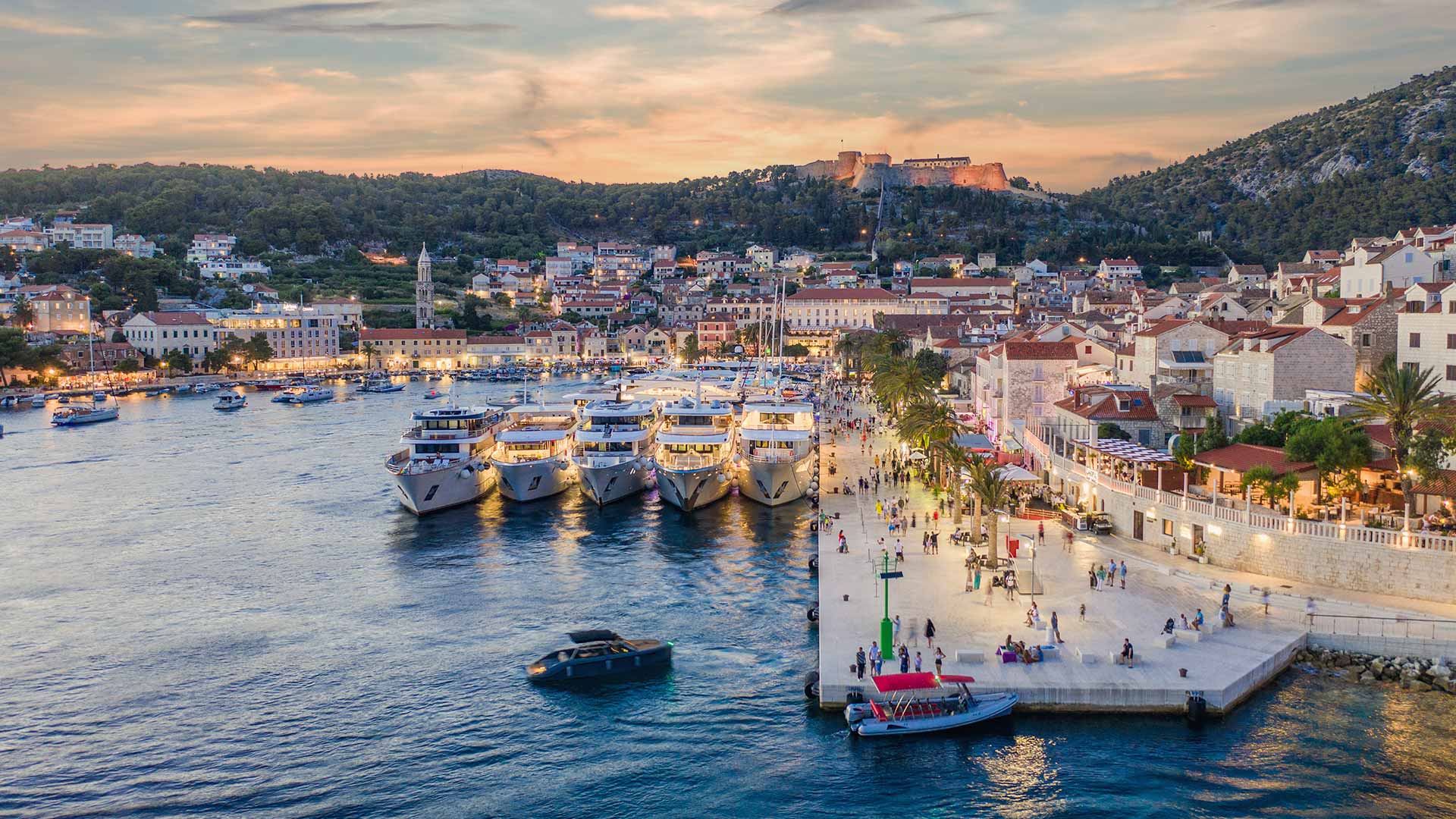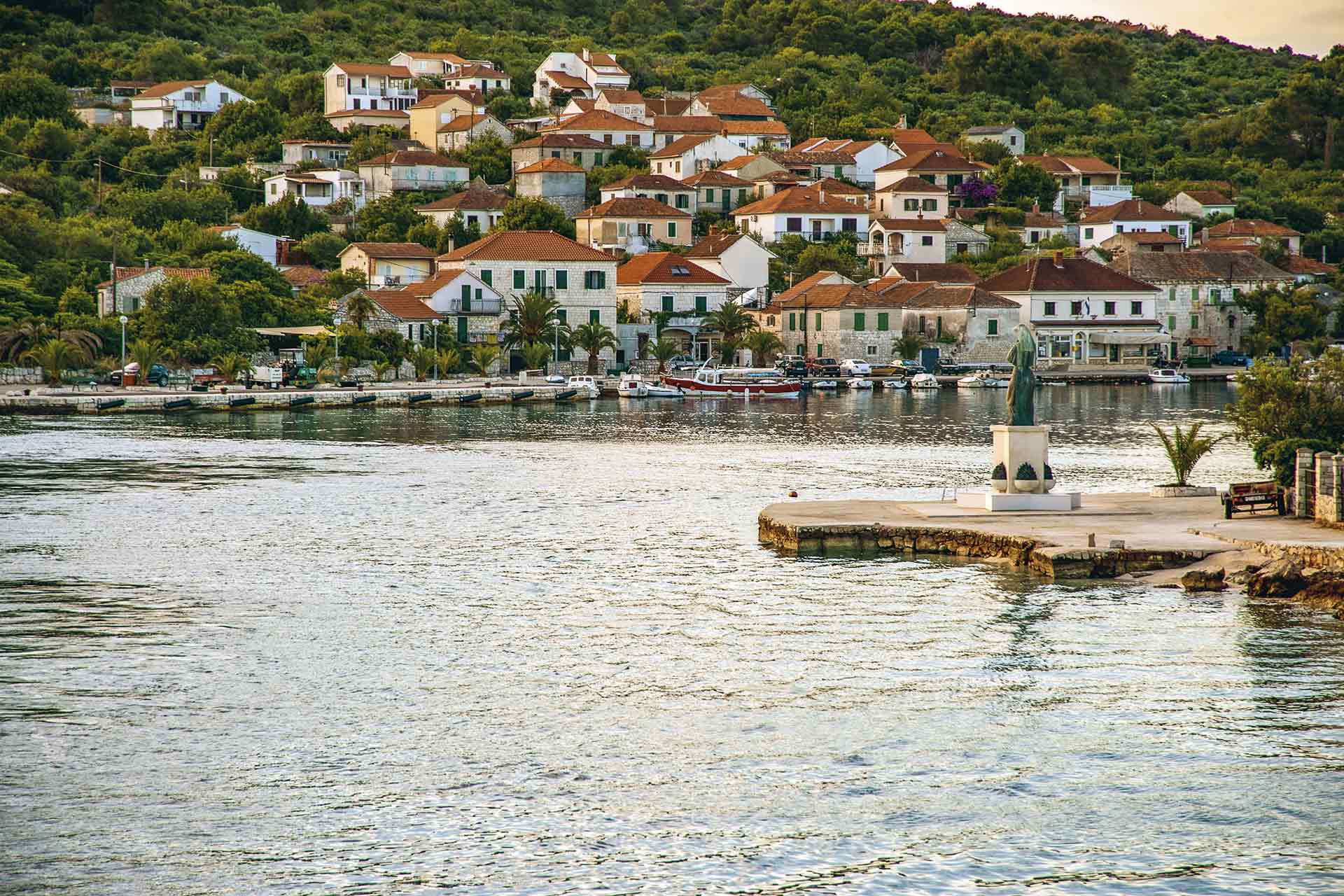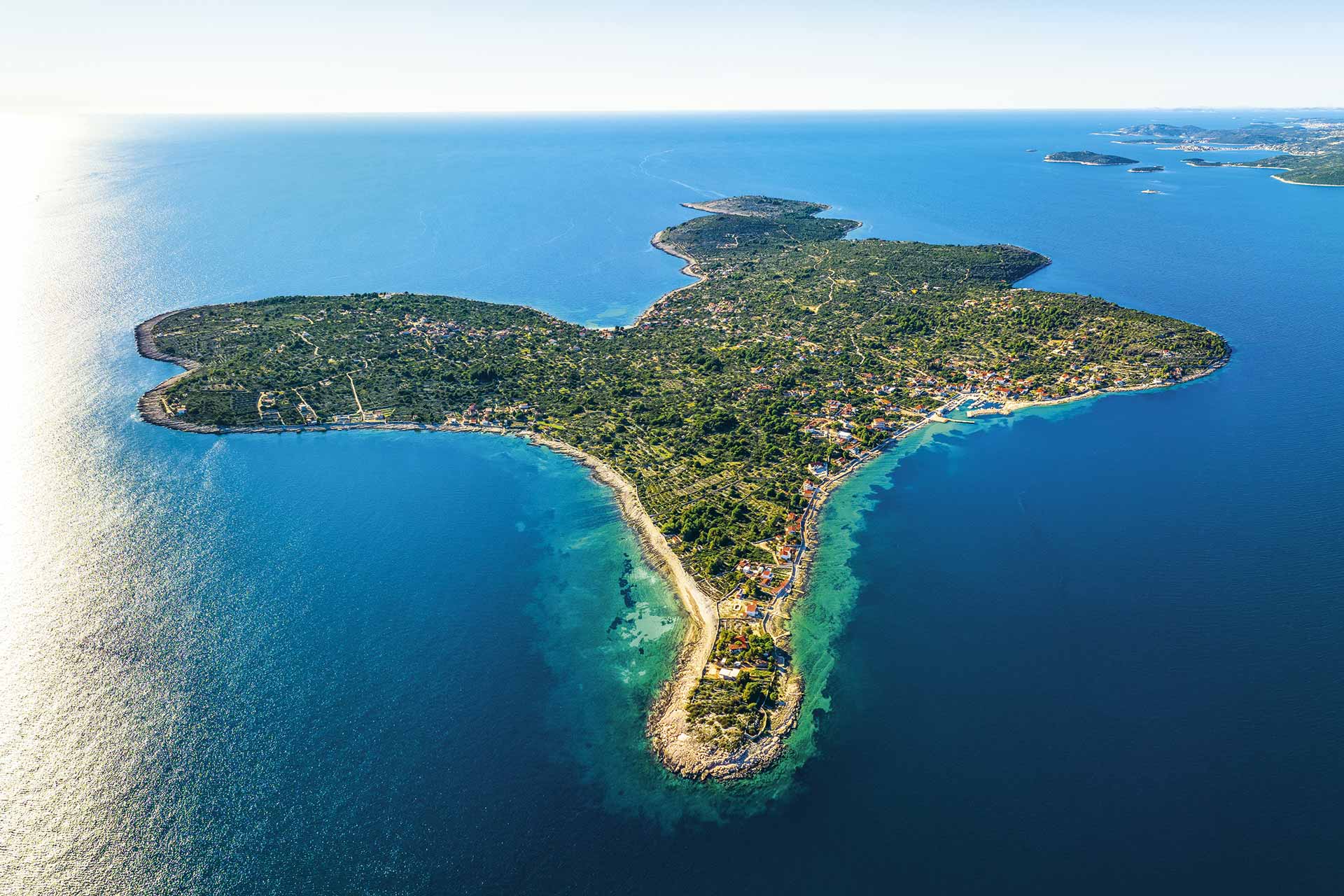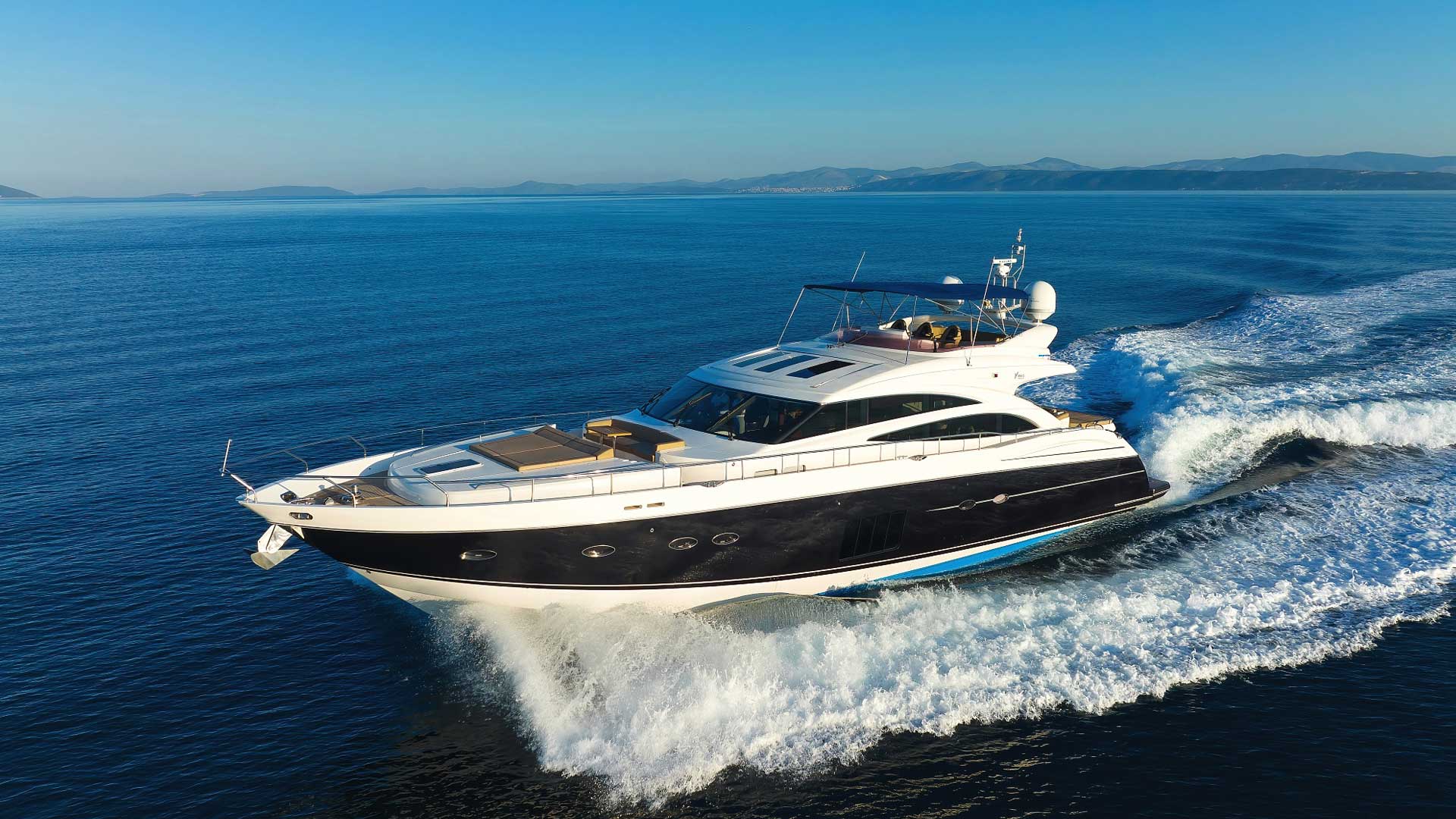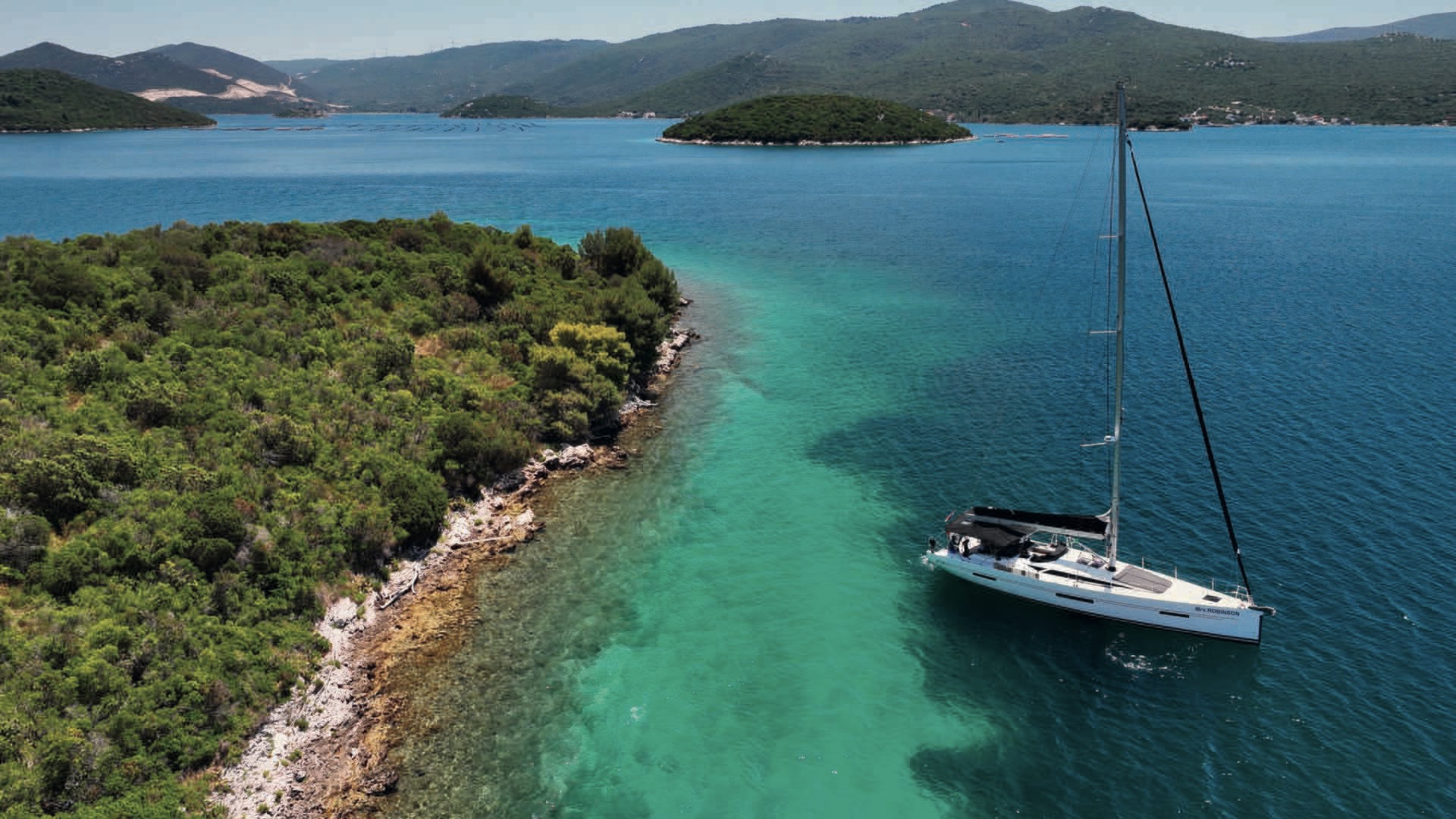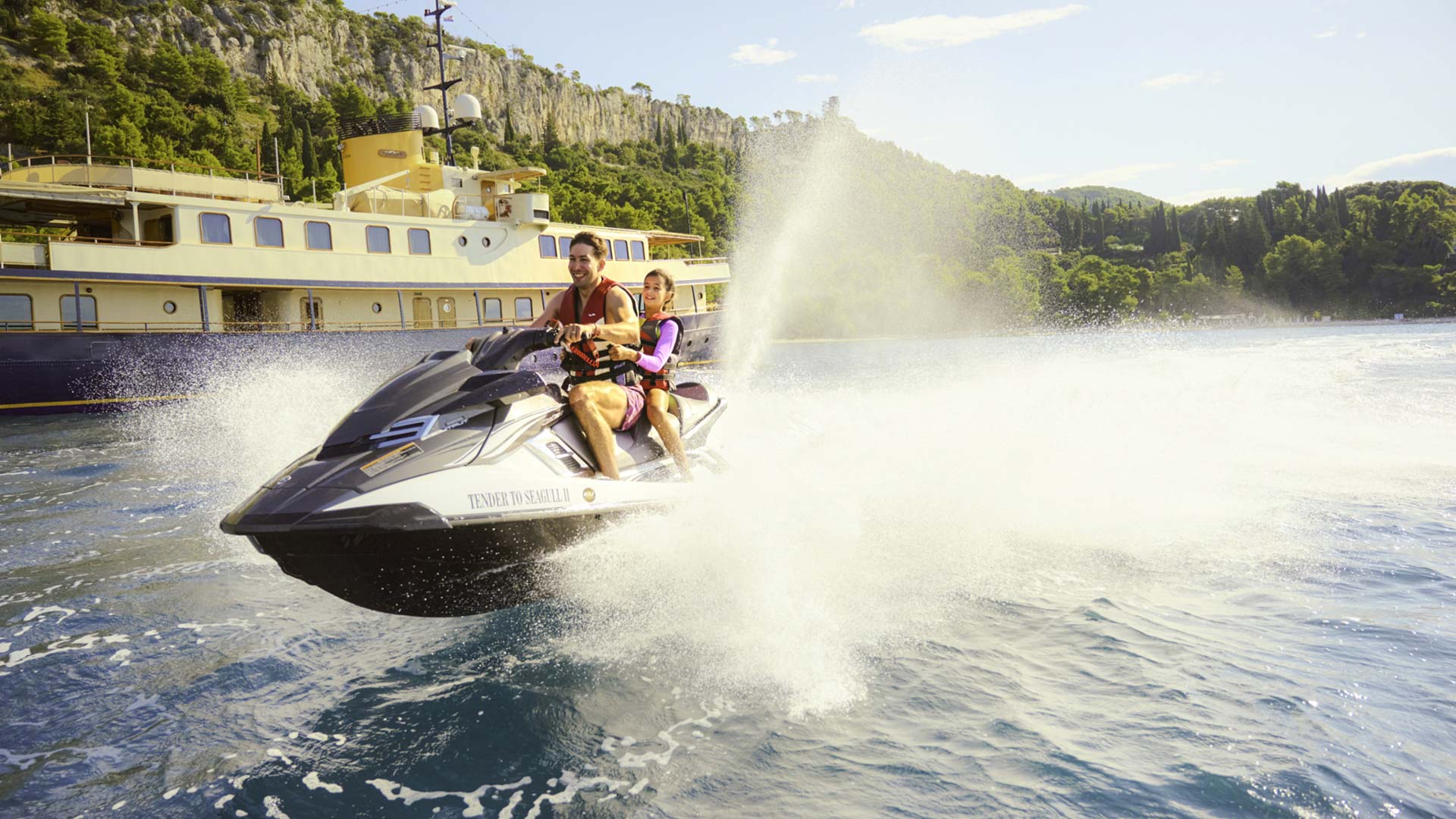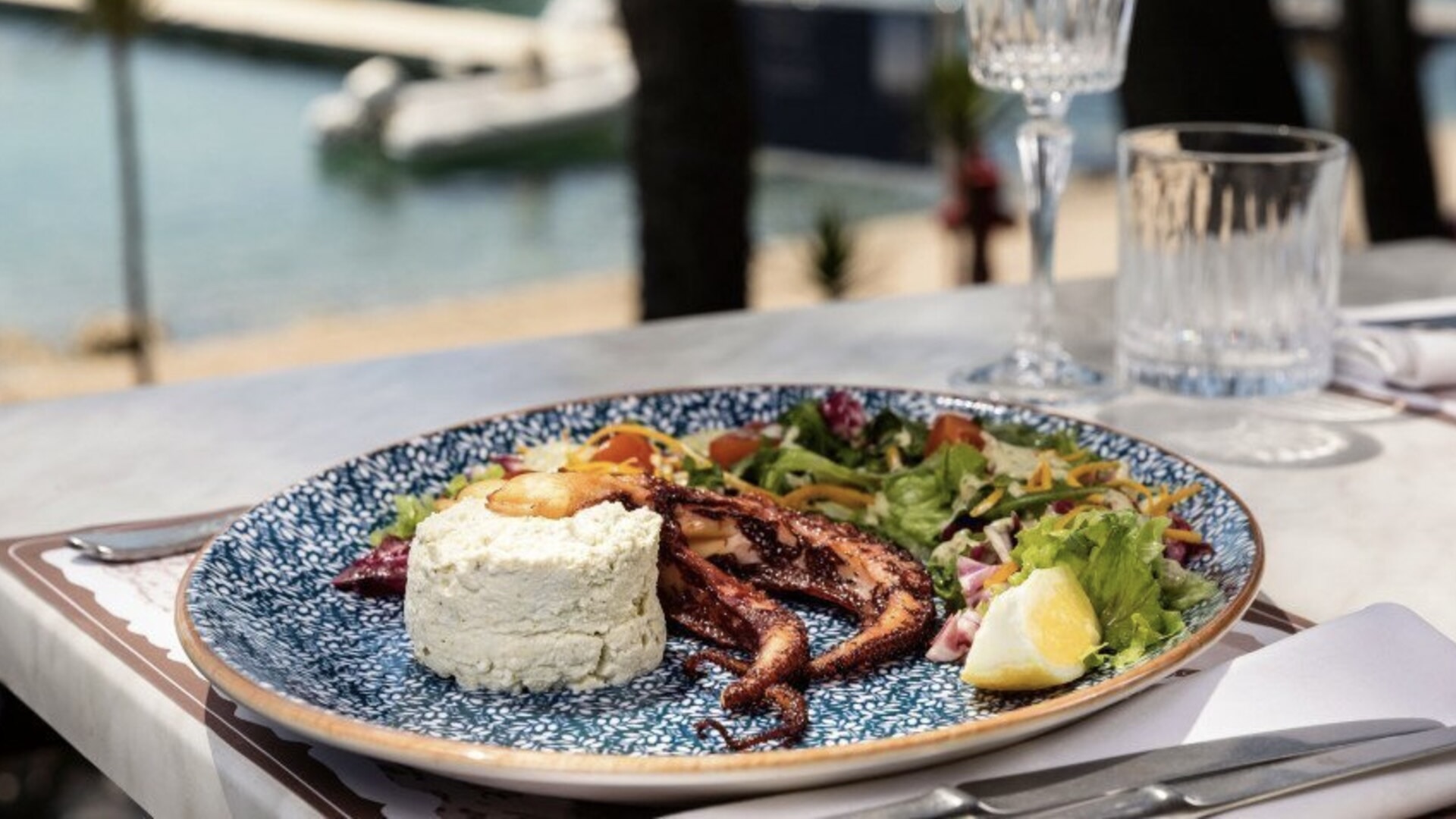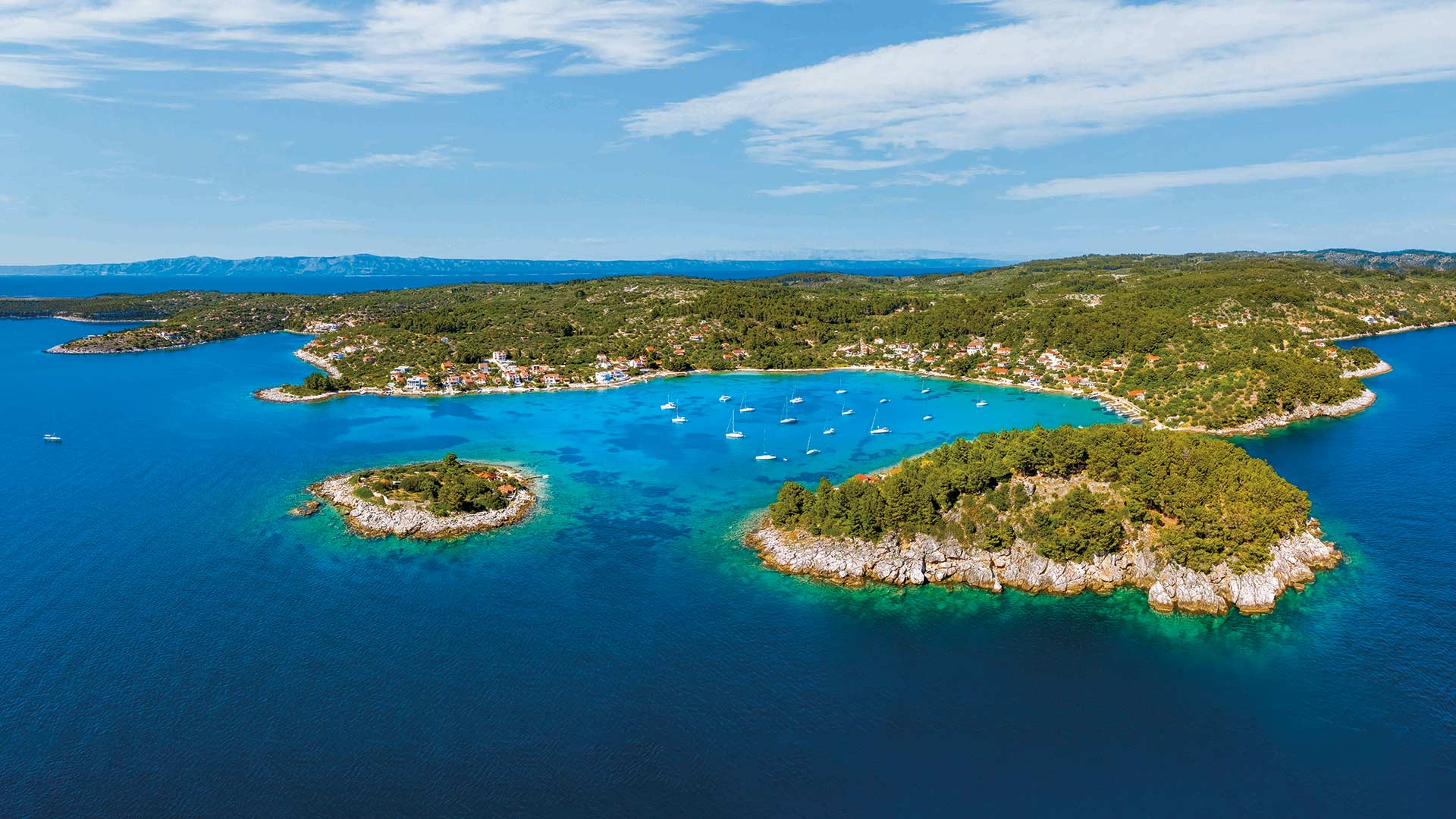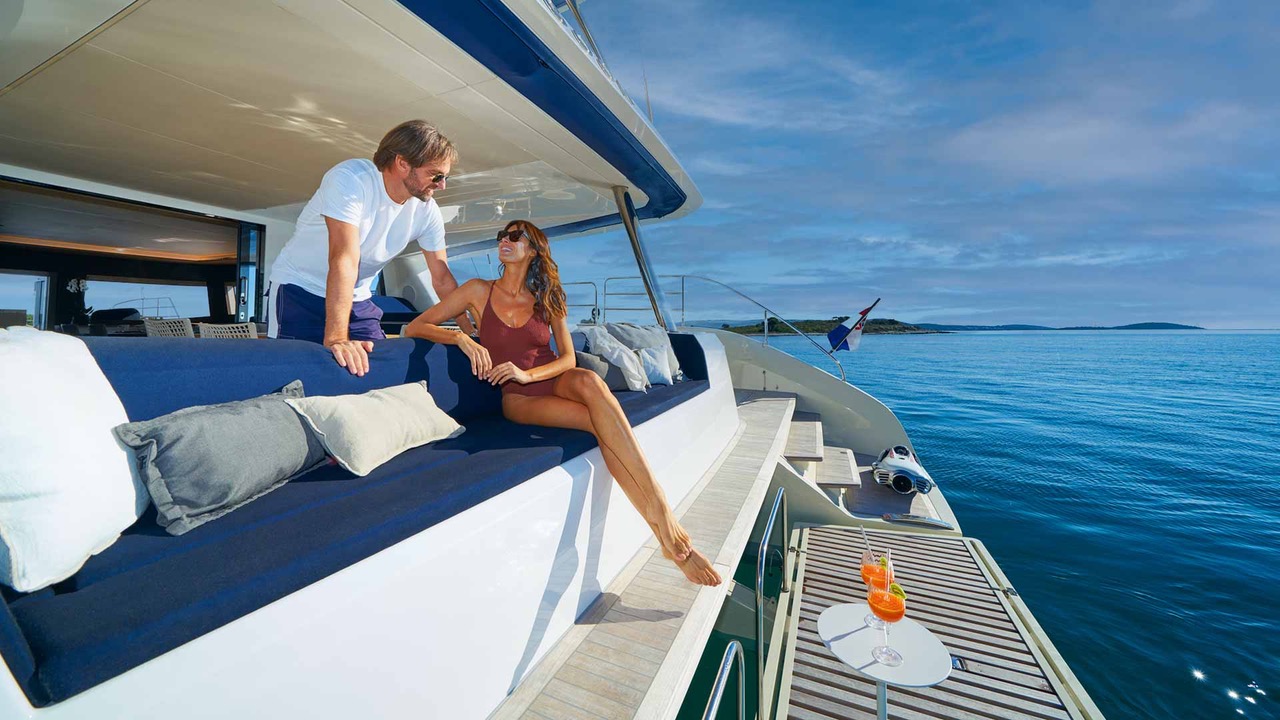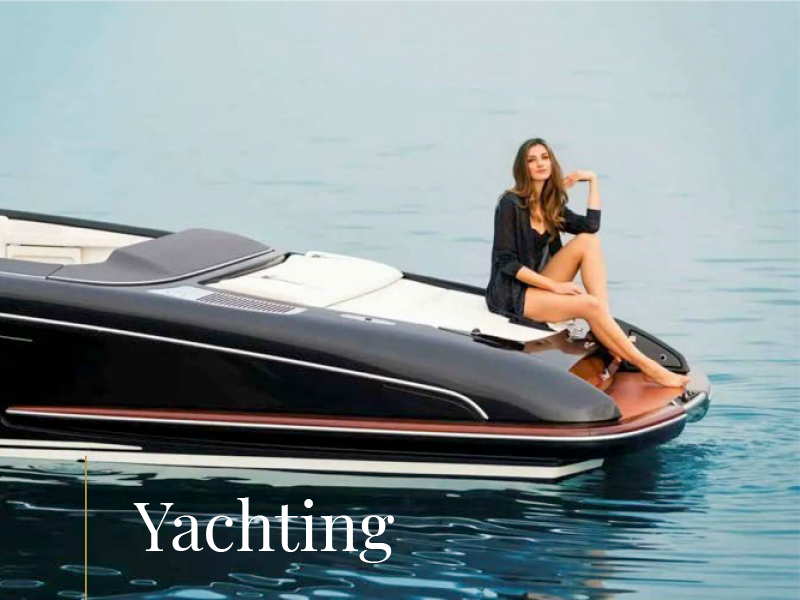Beloved for the turquoise Krknjaši cove, the shores of Mali and Veliki Drvenik offer the authentic world of traditional Dalmatia and uninhabited bays where you can find peace and merge with nature
On the popular sailing route between Split and Šibenik, only a mile away from the mainland, lie the mysterious islands of Mali and Veliki Drvenik. Despite having everything it takes to become another popular yachting destination of the Adriatic, these unique islands have somehow been looked over by all trends.
The only exception is the Krknjaši cove, recently introduced to high yachting society as Blue Lagoon.

There are no hotels on Drvenik islands, nor a real marina. Of all the many yachts that sail along its shores during the summer, only a few visit it, and most of the local population from the nearby mainland have never set foot on either of them. Their outer coast faces the open sea, so in addition to their authentic charm, they managed to preserve a touch of marine wilderness.
Veliki Drvenik
Veliki Drvenik is larger and much more popular than Mali, which is only a mile farther to the west.
Krknjaši
On Veliki Drvenik, the most attractive destination is Krknjaši, a photogenic lagoon painted with the loveliest shades of turquoise that stretches along its eastern shores.
It borrows its name from two small islets, Mali and Veliki Krknjaš, that lie farther along in the direction of the sunrise, creating a natural framework for this unique beautiful cove.

Krknjaši is often visited by vessels, but while in the distant past visitors were sailing ships waiting for the favorable wind to continue their journey, today it’s numerous daily visitors from Split and Trogir looking for fast-paced day at sea. Still, when night falls, significantly fewer vessels stay behind, and that’s when the pristine beauty of Krknjaši is revealed.
The only safe approach to the lagoon is from the south, where a colony of seagulls from Krknjaš Veliki will give you a loud welcome. Only vessels with a draft of less than 2 meters can pass between Mali and Veliki Krknjaš, while the northern approach is too shallow for all vessels. The most charming part of the cove lies near the islet, where shallow waters are ideal for anchoring, and the seabed is perfect for divers.
Restaurants near Blue Lagoon
Ensure protection from mistral by anchoring towards the center of the lagoon, where the depth is up to 15 meters, and if you’re coming in aft first, tie your vessel to the shores of Veliki Drvenik. The islands can provide good shelter even during storms, but should be avoided with southerly winds.
If you want to go ashore, visit the traditional tavern Krknjaš, or the newly opened Beach Bar & Restaurant Shkoy.
South coasts
Those in search of more intimate coves should definitely get to know the southern shores of this indented island. About three hundred meters into the mainland, there are only almost uninhabited coves of Kokošinje and Solinska. They provide protection from all winds except from the south, and allow anchoring at depths from five to ten meters.
In Kokošinja cove, the muddy bottom is excellent for anchoring, especially in tramuntana, while Solinska cove is the best choice for mistral. Charming turquoise waters and the beautiful beach in Solinska are visitors’ favorites, and with good weather, many decide to spend the night there.
The western side of the island
With southern wind, spend a carefree night in Mala Luka. Located on the western side of the island, this bay offers two safe anchoring spots. Its southern arm provides better protection from the mistral, and the eastern from the tramuntana.
The sandy bottom and depth up to 12 meters allow safe anchoring, to enjoy the silence of this uninhabited bay. And if you want to stretch your legs a little, a short walk of about 30 minutes will bring you to the church of St. Nikola and stunning views of the surrounding islands.
Village Veliki Drvenik
The only larger settlement on the island is a place also called Veliki Drvenik, where the ferry docks as the only contact with the mainland, and is literally the main attraction in this sleepy village, especially in the winter months.
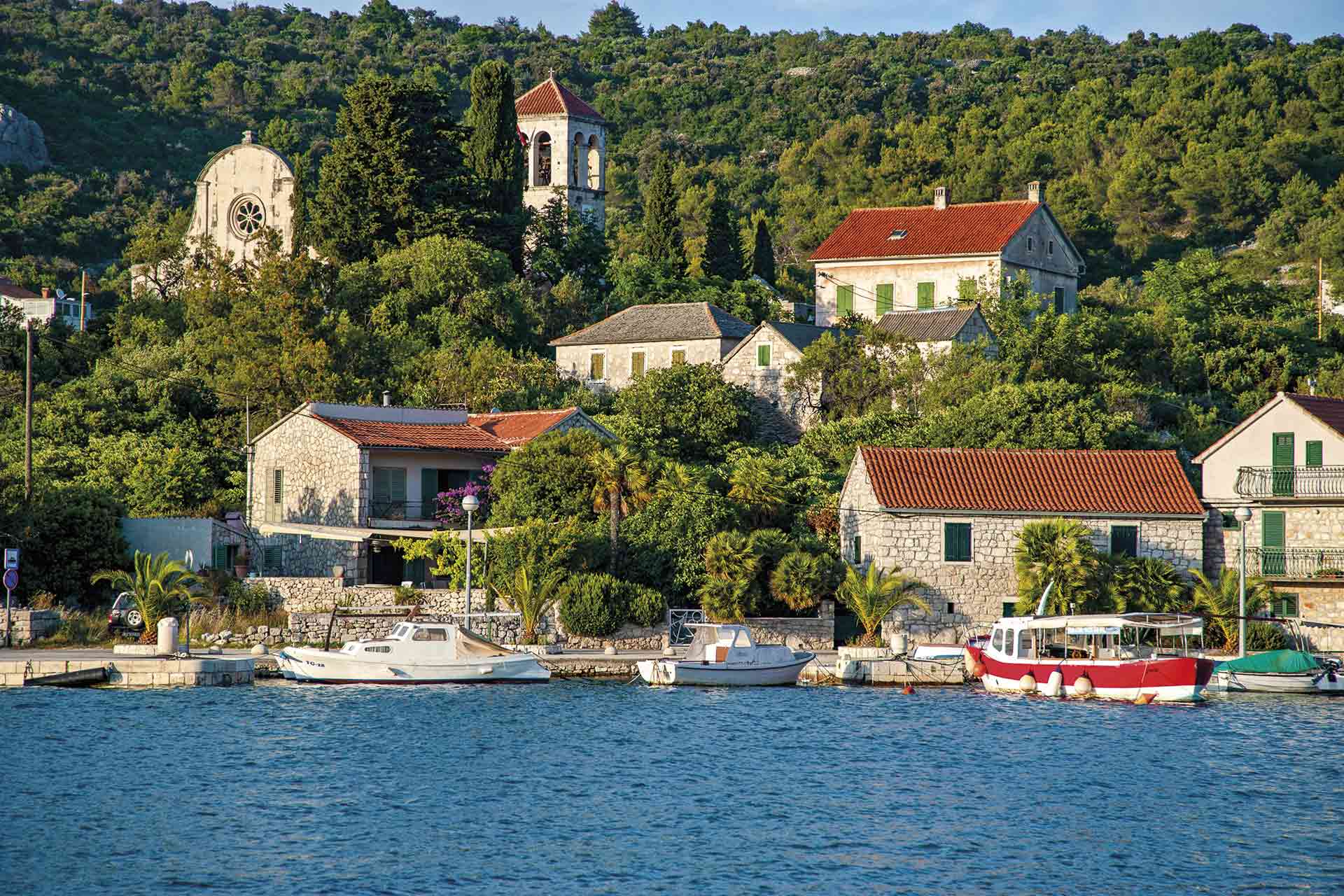
The cove has three arms and anchoring is recommended in the inner two, which are protected from all winds. Caution is advised, but only due to the stone slab partially covering the bottom. While the middle arm leads to the center of the village, the northern holds a breakwater, suitable for mooring 15 vessels, but as moorings have not yet been installed, you should drop an anchor (at a depth of about 15 meters).
In the off-season, you can also tie your vessel on the side of the breakwater on the inside. There are several taverns and shops in the village, and at dusk, climb up to the church of St. Juraj with an enchanting view of the surrounding archipelago.
Mali Drvenik
Mali Drvenik is significantly smaller in terms of area, number of coves and popularity than its closest neighbor, Veliki Drvenik. There is a village there, facing east, called Borak, where the ferry docks. There is also a small port, where apart from local boats, only a few vessels can be moored.
Still, if you sail to this island, you can drop your anchor in Velika Rina. This cove, located on the southern side of Mali Drvenik, offers a stunning view of the open seas, while its turquoise waters and one sandy beach are pleasant for the eyes, soul and body.
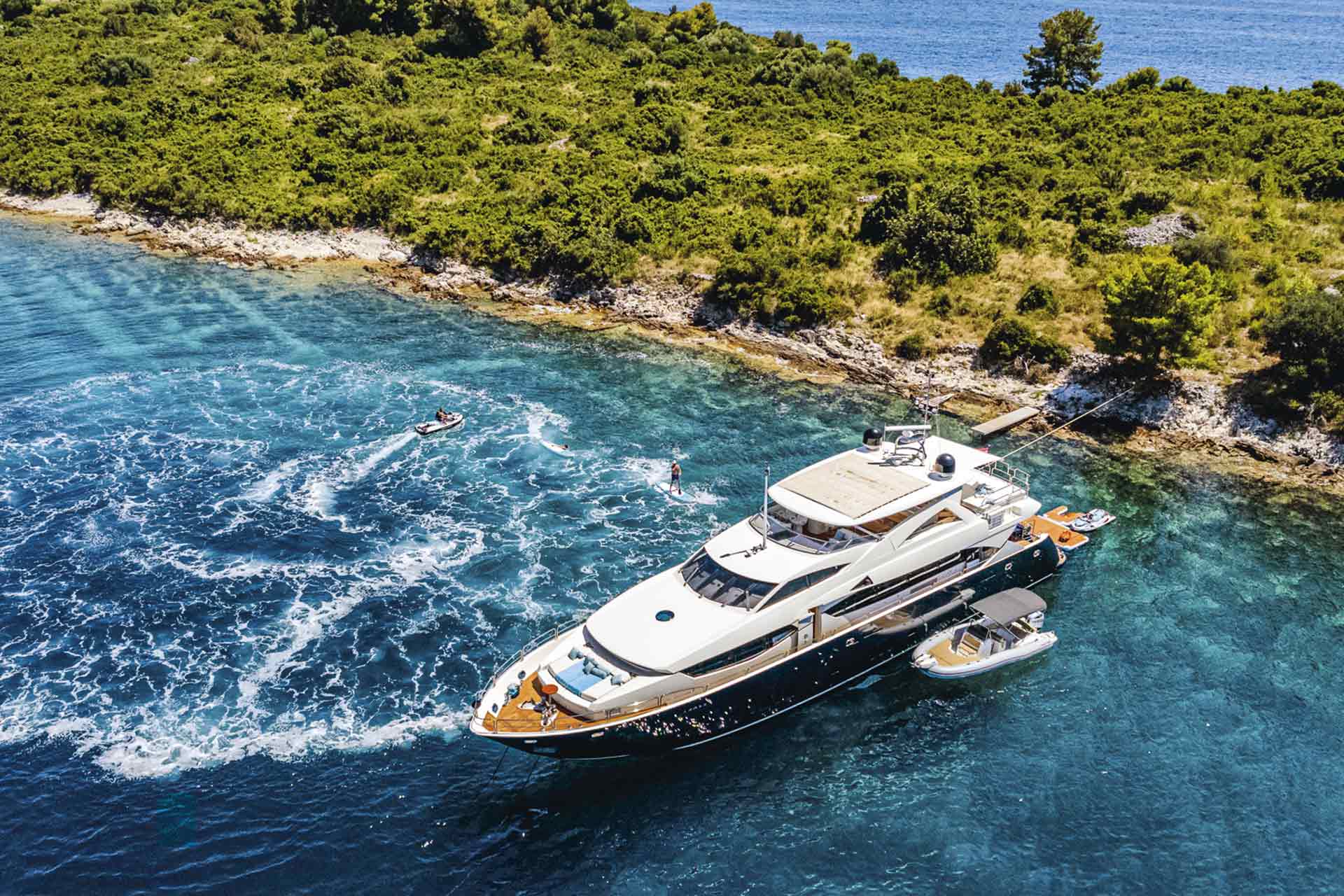
Even though not protected from southerly and westerly wind, it provides excellent protection from tramuntana and bora. There is a beach bar there and a creatively decorated tavern, with several buoys reserved for their guests. On the north side of the island, there is another picturesque bay, Mala Rina, but it is suitable only for a short daily stay at anchor, in good weather.
Text Josipa Vlahović Cikatić
Photos Ivo Pervan, Boris Kačan i HTZ / Mario Jelavić, Aleksandar Gospić
